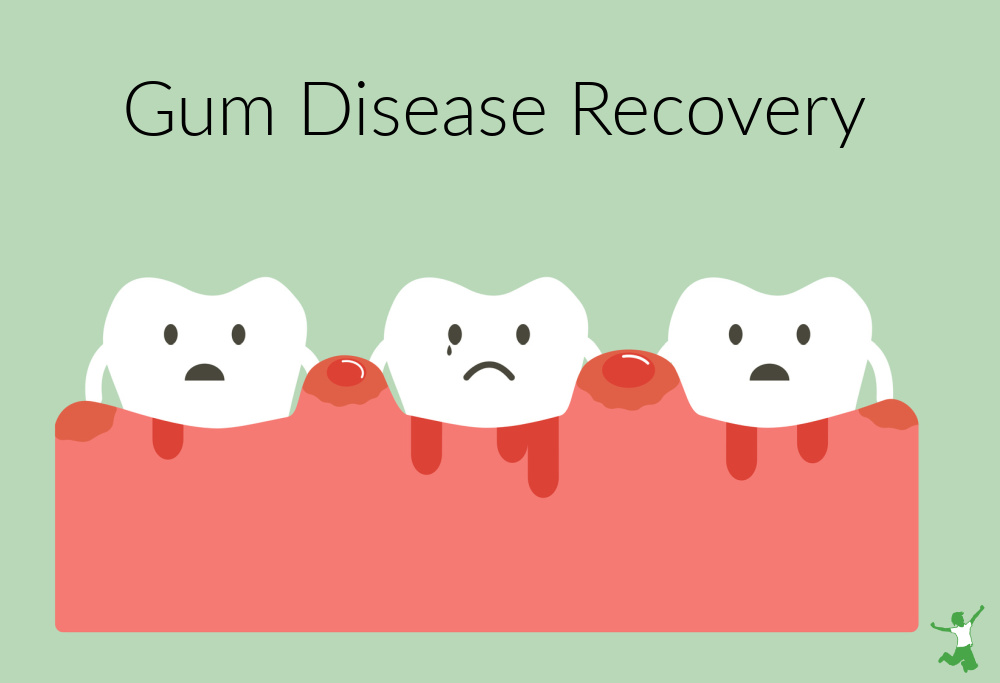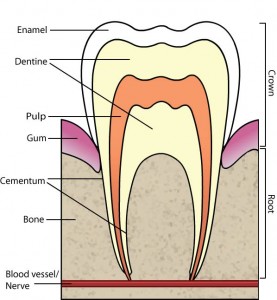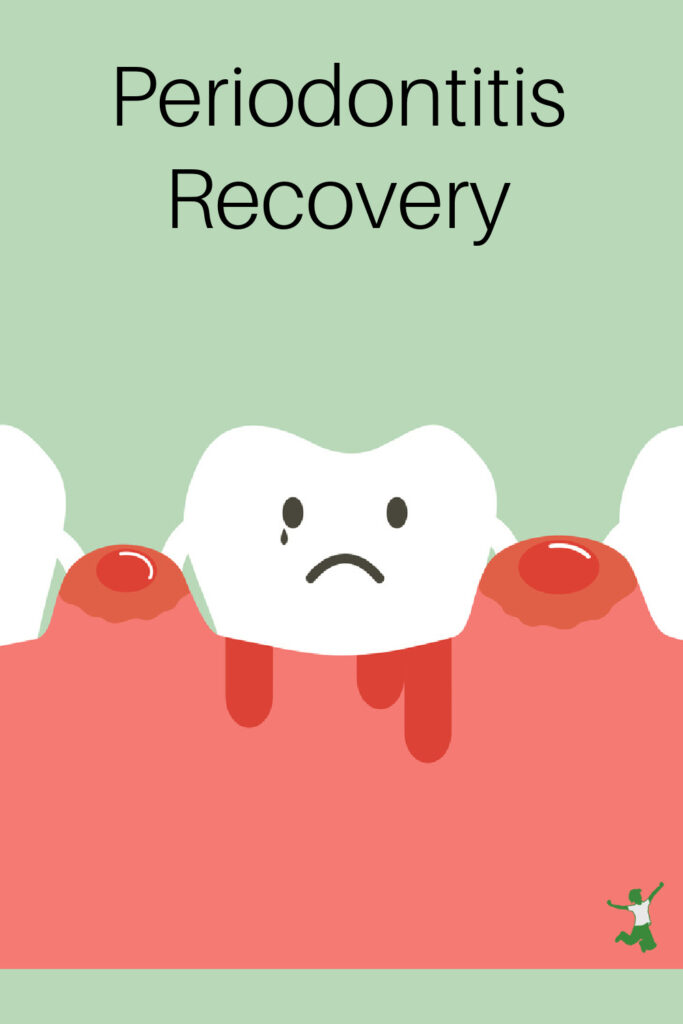Natural dental health expert Will Revak examines how a key traditional food is required for recovery from periodontitis and yet is often overlooked by those seeking holistic approaches to optimal oral health.

Before an in-depth discussion of how consuming traditionally prepared bone broths supports our oral health in such a foundational way, we need to set a baseline to understand just how common oral health issues are.
Let’s dive right in!
Sobering Statistics about Periodontitis
Let’s cover the “bad news” first because contained within the “bad news” are clues and gems of wisdom on how to create the “good news” of improved oral health in our own lives and that of loved ones.
- 9 out of 10 adults at age 30 already have some stage of active gum disease.
- 65% of 15 year olds are already showing the beginning signs of gum disease.
- 92% of adults have tooth decay (National Institute of Dental and Craniofacial Research).
The results, unfortunately, go well beyond a pretty smile.
- Loss of teeth (1 in 3 65 year olds has no natural teeth left in their mouth).
- The breakdown in health results in the loss of the ability to properly chew food.
- Cost of dental insurance throughout the life of an average person.
- Huge implications and potential causal factors of oral disease in other systemic diseases including heart disease, cancer, diabetes, arthritis, and the list goes on and on.
If these sad statistics are correct, which unfortunately they are, most of us are going to personally experience this breakdown in our oral health which will significantly impact our general health and our ability to live a full life.
However, a close look at these issues can illuminate some gems on how we can take the road less traveled and navigate to greater oral health.
Before we get into the “good news”, let’s spend a moment understanding the two main issues here, tooth decay and gum disease.
This will allow us to fully grasp the significance of how bone broths support greater oral health for a lifetime.
The Link Between Cavities and Gum Disease
Tooth decay and gum disease are fundamentally the same issue.
Both involve a breakdown and loss of bone tissue and connective tissue.
Most people realize that tooth decay is a bone loss issue. However, gum disease also involves bone loss.
You see, as gum disease progresses, the bone that acts as a foundation for our teeth breaks down. Lacking a foundation over time, the teeth simply fall out.
Gum disease is the #1 reason for adult tooth loss!

In addition, both tooth decay and gum disease involve the breakdown of the connective tissue in the mouth.
In the diagram above, you can see that the center chamber of each tooth is filled with pulp, which is nerves, blood vessels, and (mostly) connective tissue.
Moreover, each tooth is anchored to the jaw bone foundation by a ligament (connective tissue).
If you think about it, bone never directly connects to other bones in the body.
There has to be connective tissue to connect (redundancy intended) to the bones.
The gum tissue really functions as an interface between the teeth and jaw bones as well as the mechanism to support the region by circulating fluids in the area.
With this baseline in place, the question is how to best support and enhance the body to create and maintain greater bone and connective tissue health.
Folk medicine is a really condescending way of referring to how our ancestors successfully organized and kept themselves alive on a planet where the only constant was change.
Interestingly, many of our ancestors showed an expression of vitality and vigor that is becoming less and less common in our times.
Well, folk medicine has long understood the concept of “like supports like”. In other words, when we consume a specific part of the body of an animal, we support that same part of our body.
Thankfully, we don’t have to eat cow teeth in order to support our oral health!
But the principle that the bone and connective tissues in the body of an animal provide our own bones and connective tissues with the specific nutrients they need to grow strong and maintain health over time rings true.
Modern nutritional science substantiates what our ancestors understood through instinct and observation.
Keeping it simple, our bones and therefore teeth are mostly built from calcium and phosphorus, among other minerals.
A major component of our connective tissues is collagen. One of the beneficial aspects of collagen are a group of nutrients called glycosaminoglycans (GAGs for short).
Anyone who has spent some time in a supplement section knows a few popular GAGs, glucosamine, chondroitin, and hyaluronic acid.
GAGs are crucial for supporting greater connective tissue health.
In fact, they are prized as “youth serums” for their ability to help the joints feel soft and the skin remain firm and even in tone (all connective tissue support).
The question is how do we get these beneficial minerals and nutrients into our systems in a highly bio-available form?
Bone Broth: Raw Materials for Gum Health
The answer is traditionally prepared bone broths!
It is important to note that organic broth from the store is no substitute.
If you want the quality necessary to heal, you really should make it yourself!
If you think about it for a moment, slowly cooking bones, particularly joint bones, gives the bone and connective tissues in the pot time to break down into the stock water.
The result is the perfect balance of minerals that are easily absorbed by the body to support bone health.
In addition, the broth includes copious amounts of collagen for connective tissue health as well as healthy fats from the marrow to make all the above more bioavailable.
Mineral supplements will not provide the same easily absorbed, colloidal minerals as a properly prepared bone broth!
While this may not sound particularly mouth-watering described this way, it’s precisely this process that not only makes any soup way more nutritious but also much more flavorful and delicious.
Think Grandma’s soup, and if you didn’t have a Grandma who made soup like this, all the more reason you have to for the health of your family!
It’s really so simple, which is perhaps why it is often overlooked.
You can use bones from any animal you feel comfortable eating. This can range from beef and chicken to turkey, duck, fish, bison, deer, lamb…you fill in the blank.
Wild caught from clean areas would be optimal for their greater diversity in diet.
Where to find? Many of us simply go to our local butcher and ask for meaty joints and marrow bones for stew.
Be sure the animals are pasture-raised. Again, following the “like supports like” idea, how are we supposed to live healthy lives eating unhealthy animals?
Use bone broth as a base for soups, add it to beans or rice while cooking them, and have a warm cup in the morning (really!).
Here are a few delicious recipes that incorporate bone broth for breakfast.
There are so many ways to enjoy this delicious, nutritious bounty from nature that will help keep your teeth and gums strong for your entire life!
The question you are faced with now is if you are willing to take the road less traveled today and follow the path our ancestors clearly showed us was the way to creating and sustaining greater health (including oral health) or continue to follow our modern culture in its nutritional trainwreck.
I’ll see you at the butcher!









Elisa,
We’ve healed my dd’s cavities through a combination of diet and supplements. Our story is in the comments. I’d highly recommend the book Cure Tooth Decay.
Seana,
In your comments you talk about tooth density, not cavities per se. Was she really having cavities affecting her dentin, not just her enamel? I really need to hear a real and true story here, as it is quite scary to talk with dental professionals. They all say that the cavity will get bigger leading to more drastic interventions (i.e., root canal etc.). If her cavity will advance to reach the nerve, then I would consider myself an irresponsible parent. I am really torn. My daughter is the pickiest eater on this planet so it is impossible for me to feed her a perfect diet. This is a fact. She has bone broth at least once, most days twice a day, eats butter from pastured cows, eggs from pastured chickens…but she also eats organic cookies and annies’ bunny crackers, organic tortilla chips- basically a wide range of what I call “organic junk” (mostly processed organic grain-based snacks), some chocolate (good quality) etc. I do not give her any vitamins or mineral supplements except fermented cod liver oil and biokult probiotics. Do you think adding the supplements you mentioned above could make a difference, considering her current diet (which would be really tough to change)?
I tried arrowroot and/or coconut-based sweets but she does not like them.
I will try to get the book you recommend asap. Thanks
Aloha Elisa,
Seana is right on point with her support to your family. There are many, many people, both young and old, who have successfully navigated this path to greater oral health and healed cavities.
Here’s a quick recap of what the research shows:
1. the combination of cod liver oil and butter oil is critical for the synergistic benefit of vitamins A, D, and K2. The bottom line here is this combination activates the body’s ability to intelligently place calcium. The results are profound as Weston Price discovered 80 years ago and Rami Nagel has helped bring back into the attention of our modern culture.
2. The research of Dr Ralph Steinman has shown very clearly that the issue of decay is primarily a systemic one and secondarily an issue that is ‘in the mouth’ like conventional dentistry insists. Dr Steinman showed us that teeth are alive and have a fluid flow through them. This fluid flow can flow the right way (from within the tooth, out) to flush the teeth from ‘bad bugs’ that are implicated with decay. However, the fluid flow can flow the wrong way and actually suck bad bugs into the teeth and speed up decay.
So, the question is… What determines which way the dentinal fluid flows? Dr Steinman determined through extensive research that diet and stress play the major roles in determining if we are going to be resistant to decay or vulnerable to it.
Here is what Dr Steinman discovered…
Dentinal fluid flow is controlled by the parietal gland (part of the salivary gland system). This flow is massively impacted by the balance of phosphorus in the blood.
Here are the dietary factors Dr Steinman found supported (as well as imbalanced) blood phosphorus balance.
1. Eat moderate amounts of animal protein at each meal (helps maintain phos balance)
2. Eat lots of high quality fats (high quality butter, coconut oil, cod liver oil, etc)
3. Strictly reduce or eliminate sugar (inhibits phos balance)
4. Cultivate a happy environment
That’s pretty much it. Simple really, other than the fact that each of us has access to sugar 24/7 and most of us already are addicted to it. On a personal level, addressing the sugar addiction is easier. But looking to support a child can be trickier as you don’t want to deny them and also don’t want to make sugar ‘the reward’ either. We have found that giving free access to sugar treats, our family has moderated their consumption very well. It’s counter intuitive that if we have free access to something, it’s not the great. 🙂
We hope this helps you along your path Elisa. Feel free to ask us any direct questions by following our email link from our site at OraWellness.com
Thank you for providing us the opportunity to lay out this important information.
Aloha!
What happens if you can’t tolerate “lots of high quality fats (high quality butter, coconut oil, cod liver oil…?
Hmm, not sure here. What is the reason one can’t tolerate high quality fats? From my limited understanding, our ability to digest fats is factored on how congested our liver is. The good news is the liver is an organ which responds so well to efforts to cleanse of toxins. Perhaps given time, you can tolerate higher quantities of quality fats?
Can tooth decay, i.e., cavities really be reversed? Can you really heal a cavity without a dentist? I hear all these stories, but is it really possible? I truly believe that you can heal periodontal gum disease, but cavities? My daughter who is just 4 years old has a cavity, and I have been told by several dentists that we need to fix it, that is, she needs a filling and there is no way around this. She does not have a perfect diet, far from it, but she has daily bone broth prepared traditional way, probiotics, pasture eggs and butter. We brush her teeth with baking soda and her plaque score was 0 (perfect, that is, absolutely no plaque on her teeth). Her gums are really healthy, but her molars are stained. Only one of the molars developed a cavity, despite the daily bone broth in her diet. I am inclined to have it fixed (a filling) and have her other molars sealed. I have read about the dangers of sealants (BPA levels), but preventing decay seems to outweigh these risks. I have read a tons of testimonies from parents whose kids never had cavities due to sealants despite not so perfect diets.
I would really love to heal her cavity without dentists, but I need at least ONE concrete example of this…at least one person who actually reversed cavities though diet, cavities in the dentin (not only the enamel) confirmed by several dentists. Thank you so much.
I didn’t read through all of the comments, but I was wondering: Is there any risk of fluoride exposure in bone broth, considering fluoride concentrates in bones and fluoride in water concentrates when boiled? I have a thyroid condidtion and really try to avoid all fluoride exposure. I would be using RO or spring water to make the bone broth.
Aloha Ella,
I think this is an excellent question!!! Thank you for asking. While I agree with your line of thinking, it is our opinion that the benefits of bone broths far outweigh the risks of excessive fluoride exposure from consuming bone broths.
If you are particularly concerned, you could find a butcher who works with veal and ask for these bones. Just like in humans, fluoride accumulates over the years in the bone tissue. Given that most cattle who are raised for pastured meat really aren’t on the planet very long, I discount the risks personally. All that said, I commend you for your forward thinking and agree with all your points you touch on.
Obviously, one determining factor would be if the cattle are given fluoridated water to drink. If so, I would have to weigh it all much more carefully. Clearly, making stock with non fluoridated water would be wiser in general for reasons we don’t need to discuss here.
Holler with any other excellent questions Ella, we’re here to help!
Thank you and Aloha!
Thank you for your kind response and great ideas. I will try these suggestions.
I’ve made bone broth for years, cooking it down into a gelatin. I use it in all of my soups, gravies, and sauces. However, I strain and degrease it first. Does it still have its dental-nourishing properties without the fats?